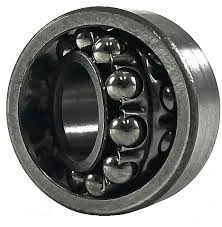
Dec . 10, 2024 20:22 Back to list
Understanding Radial Cylindrical Roller Bearings and Their Applications in Machinery
Understanding Radial Cylindrical Roller Bearings
Radial cylindrical roller bearings are a crucial component in various machinery and applications, widely recognized for their ability to handle heavy radial loads. Unlike ball bearings, which use spheres to reduce friction, cylindrical roller bearings utilize cylindrical rollers, allowing them to offer a larger contact area and increased load-carrying capacity. This article delves into the features, advantages, applications, and maintenance of radial cylindrical roller bearings.
Construction and Features
Radial cylindrical roller bearings are composed of several key elements an inner ring, an outer ring, a cage (or separator), and cylindrical rollers. The inner and outer rings are designed with raceways that guide the cylindrical rollers, which are arranged parallel to the axis of rotation. The design promotes efficient load distribution, minimizing stress concentrations that can lead to failure.
One of the most distinctive features of these bearings is their ability to accommodate high speeds and heavy loads. The cylindrical shape of the rollers reduces the risk of skidding, enabling smoother operation. Moreover, these bearings often come in various configurations, including single-row and multi-row designs, to cater to specific application requirements.
Advantages
The advantages of radial cylindrical roller bearings are manifold. First and foremost, their high radial load capacity makes them ideal for heavy machinery where equipment durability is paramount. They also have a low profile, which helps save space in mechanical designs. Since they typically have fewer contact points than other bearing types, they experience less friction, enhancing energy efficiency.
Additionally, the ability to operate at high speeds without significant temperature increases is a major benefit. This characteristic is particularly beneficial in applications like electric motors and gearboxes, where efficiency is a critical factor.
radial cylindrical roller bearings

Applications
Radial cylindrical roller bearings are found in a wide array of applications ranging from automotive to industrial machinery. In automobiles, they are commonly used in wheel hubs, gearboxes, and transmissions, where they effectively manage radial loads while ensuring smooth rotation.
In industrial settings, these bearings are utilized in conveyor systems, pumps, and compressors, providing reliable performance even under adverse conditions. Furthermore, in the aerospace and rail sectors, their robustness and reliability make them an indispensable part of various components, supporting both operational safety and efficiency.
Maintenance
To ensure the longevity and performance of radial cylindrical roller bearings, regular maintenance is essential. Key maintenance practices include proper lubrication to minimize wear and tear, regular inspections for signs of damage or excessive wear, and ensuring proper alignment during installation. It is also important to monitor operating temperatures, as excessive heat may indicate potential issues that could lead to failure.
When replacing or installing new bearings, attention to detail is crucial. Using the correct tools and techniques can prevent damage to the bearings, ensuring they operate efficiently for their intended lifespan. Operators should also be aware of the bearing’s load ratings and operational limits to prevent premature failure.
Conclusion
In conclusion, radial cylindrical roller bearings play a pivotal role in the functionality of numerous mechanical systems. Their superior load-carrying capacity, efficiency, and versatility make them a preferred choice in various industries. Understanding their features, advantages, and maintenance requirements is essential for engineers and operators alike, ensuring optimal performance and longevity in their applications. As technology continues to advance, the evolution and improvement of radial cylindrical roller bearings will undoubtedly enhance their effectiveness across diverse fields, paving the way for more efficient machinery and reliable operations.
Latest news
-
Premium Deep Groove Ball Bearings | High Speed & Reliability
NewsAug.29,2025
-
Durable Scaffolding Clamps - Secure & Reliable Tube Connectors
NewsAug.28,2025
-
Common Failures in Thrust Ball Bearings and Solutions
NewsAug.22,2025
-
How Tapered Roller Bearings Can Take Shock Loads
NewsAug.22,2025
-
Angular Bearings in High-Precision Spindles
NewsAug.22,2025
-
The Impact of Misalignment on Cylindrical Roller Bearing Performance
NewsAug.22,2025
